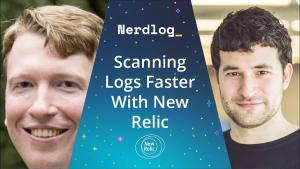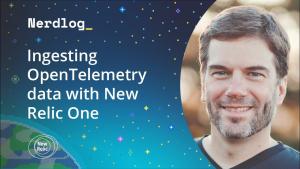Eighteen months ago, we launched new log management capabilities to help you break down silos between your log data and the rest of your telemetry and achieve end-to-end observability. This past year has seen exciting innovation and wild log management adoption.
That’s why we are so excited to share the latest innovations to our log management capabilities, available to everyone today—the ability to detect patterns and outliers in log data; simple, more intuitive analytics; partitioning of data any way you want for lightning-fast search performance; and easier onboarding.
Before we dive into what’s new, we want to share the most exciting thing that we have seen: the tangible impact log management has on helping you succeed in your role as an engineer or developer, and your ability to transform the business.
Having a single view with New Relic One is a lifesaver for me. When we tie logs to an application and try to figure out the contributing factors, I can go to one spot instead of three different tools like before.
With log management in New Relic One, we provide the best in-context correlated logs for visibility into your entire software stack. Logs represent the brain of each application, system, and device. The extra layer of granularity enables you to troubleshoot problems faster. That means no more missing data, wasting valuable time in a separate tool to dig through logs, and then spending hours manually correlating that detail with errors and traces.
We also know that when a problem occurs, you don’t have time to spare waiting for search results, nor is it fun managing and trying to scale self-hosted logging tools for high data volumes.
With New Relic One, you get lightning-fast log management that’s easy to administer and use. New Relic One log management is priced to ensure your organization can ingest all of the data you need for granular visibility. Best of all, it’s free to use for up to 100 GB/month and delivered at an affordable price beyond that for higher log data volumes.
We’ve been hard at work building new features—here’s a rundown of our latest innovations available to everyone today.
Log management helps detect patterns and outliers in log data
Now out of beta and broadly available, you can reduce troubleshooting time by using machine learning to detect clustered patterns to surface outliers in log data automatically. This capability enables you to quickly find patterns to reduce noise and create queries, alerts, and dashboards based on those patterns for deeper analysis.
Simple, more intuitive log analytics
In collaboration with our customers, we’ve made significant changes in the Logs UI. For example, you can efficiently find and use advanced features directly from the main screen. You’ll find more UI space dedicated to logs, making it easier to see the details and debug faster. This updated UI experience also includes colorization of log levels, a message summary, expanded dashboard visualization for displaying long log messages directly in dashboards, and more. For more information on leveraging the log management UI, check out our docs.
Partition data for lightning-fast search performance
Massively scaled search performance based on data partitioning provides flexibility to segment data in a way that makes sense for your teams, use cases, or logical groupings. You can optimize searches against high volumes of data to search one or multiple partitions and quickly return the results needed.
Easy log onboarding
We’ve always provided various options for getting data into New Relic One, including our native forwarder. We also support a wide collection of third-party forwarders. Continuing on that journey, we’ve expanded this to make it even easier to get log data into New Relic One.
Our recently released guided install enables you to find additional logs in common locations that will help expand your visibility while also making it easier to onboard higher volumes of data.
We added Native Heroku cloud support to expand out-of-box support for one of the most common cloud sources used by developers. And we added an option to bring in data without needing to install or maintain any third-party software, with agentless syslog support through our TCP endpoint.
Next steps
Sign up to start using log management for free today (no trial or credit card needed).
The views expressed on this blog are those of the author and do not necessarily reflect the views of New Relic. Any solutions offered by the author are environment-specific and not part of the commercial solutions or support offered by New Relic. Please join us exclusively at the Explorers Hub (discuss.newrelic.com) for questions and support related to this blog post. This blog may contain links to content on third-party sites. By providing such links, New Relic does not adopt, guarantee, approve or endorse the information, views or products available on such sites.



